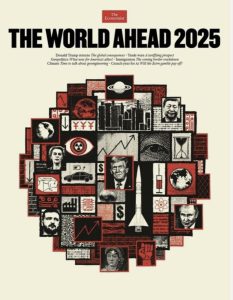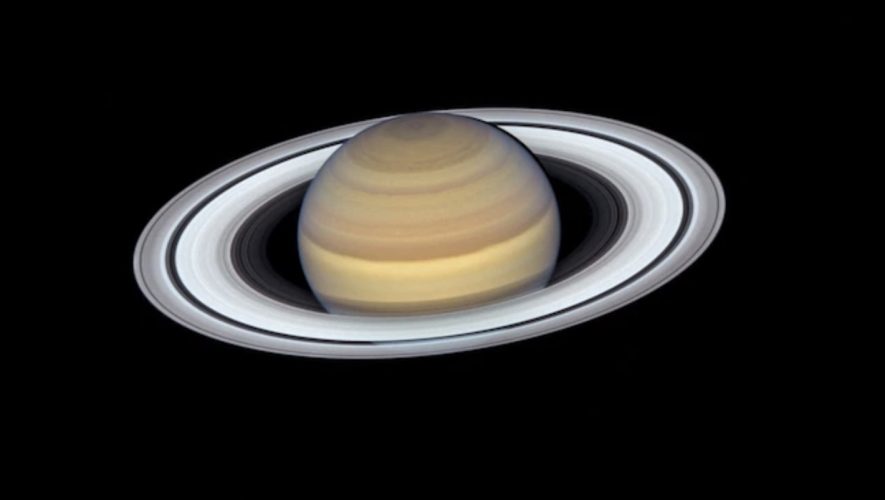My little Gnudren,
As Old Gnu writes to you he is minded that he is putting pen to paper/hoof to keyboard for the hundredth time! On this momentous hundredth occasion of his “drivelling” he writes with some matter of urgency! Time is running out! Quick! Get your telescopes out and look at Saturn’s Rings, because they are going to completely disappear in the following weeks. There are different claims on when they will be visible again. Basically they will slowly reappear in increasing degrees of visibility within some months time; and by 2032 you will be able to see them clearly again through your telescope in all their glory. By 2032 Old Gnu will be nearly a hundred, if he is still alive and on planet earth. Gnu doesn’t have a telescope but he is scrabbling to find his old opera glasses. He feels that his Weetabix 3-D Viewer made in circa 1957 might not be man enough for the job. ….apologies! ….might not be person enough for the job.

(It only cost 1/6d (one shilling six pence or 71/2 new pence) in 1961, a real bargain)
The Economist is a magazine of great impartiality and not given to sensationalism of any sort in its reporting. It does not give the names of the authors of its articles or supply small photos and Twatter and Email address appended -( excuse me while I reach for my sick bucket). Articles are reviewed and edited by a team before they go to publication. An exception was made at the beginning of 2025 when all the editors appeared by name and each wrote an article in the edition that was titled “The World Ahead”.

But much like Saturn’s rings they vanished from view in all subsequent publications. They are due to reappear in January 2026. You won’t need a telescope. On last page of each weekly edition The Economist has one obituary. The obituary in the first January 2025 edition was for Saturn’s Rings! Nay! Nay! Mr. Economist! As you rightly confess this their disappearance isn’t permanent; an obituary is an interesting way of marking a temporary disappearance! (Dear reader, don’t use this approach on friends you haven’t seen for a while). Saturn’s Rings ‘disappear’ from our sight every 29.5 years. 29.5 years is the length of time it takes for Saturn to orbit the sun. 29.5 earth years is therefore the length of one Saturn year. Saturn tilts, just like the earth, in its solar orbit. And at a certain point, as Earth.com website says, seeing Saturn’s rings from earth will be “similar to trying to spot a sheet of paper edge-on when it’s positioned at the far end of a football pitch”. I bet an Eagle could prove Earth.com wrong, especially if the paper was meat flavoured. And Eagles finding the time to read the article on the Earth.com website might be falling around laughing.

As for Saturn’s rings themselves, apparently they will be relatively short-lived on the grand scheme of things in our universe. They will only last another 400 million years. So if seeing them is on your ‘to do list’, bear in mind you have only got another 400 million years left.
So what is the conclusion to be drawn from all this? The first thing to note is that, clearly, some things are more temporary than others. Secondly: however much you dislike them, don’t go writing obituaries about people you haven’t seen for a while. You might come a cropper. Thirdly, although Old Gnu finds waiting for the X9 bus to Bristol a soul destroyingly long time, but 400 million years apparently is not a long time.
It may cheer you to know that Galileo was the first to discover Saturn’s Rings in 1610 while living in Florence. Up the road in Venice Monteverdi was completing his Vespers for the Blessed Virgin of 1610, not surprisingly; and William Shakespeare was probably writing Cymbeline; and the King James Authorized Version of the Bible was nearly published (1611). Conclusion: a lot can happen in a infinitesimally microscopically short time on the grand scheme of things in our universe. Cheers!
Vetus Pater Gnu
Academiae Musicorum et Theologia
Turris LA
XXX Mensis Januarius MMXXV


That clinches it! 1610 has become Old Gnu’s favourite year of the 17th Century!
& Bagels were invented the same year, modelled of course on Saturn’s newly discovered rings!
& Bagels were invented the same year, modelled of course on Saturn’s newly discovered rings!